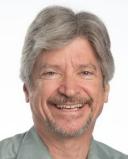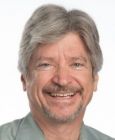Parenting
What I Learned About Authentic Teaching From Doug and Steve
Free-range teaching is alive and well—and good.
Posted May 24, 2022 Reviewed by Jessica Schrader
Key points
- The habit of passing down antiquated teaching methods you remember from your childhood can be broken.
- Teaching effectively might include being playful, humble, and student-centered.
- The bottom line to excellent teaching may be authenticity—be who you are when you teach.
One of the teachers I respect the most is Gregg Painter who recently retired after teaching English for many years at the Denver School of the Arts. He is also a gifted jazz pianist. We got to talking one night, between sets, about our “teaching heroes,” and the virtues they seemed to share. Here is some of that discussion:
Given your experience and expertise, what advice can you give new teachers, either at the high school or college level?
Don’t teach the way you remember your teachers doing it. If you teach in a public high school—as I did—and still teach the way they did 50 years ago, you have learned nothing, and school will remain as uninspiring as I remember it being in the mid-20th century. Remember sitting in straight rows, listening to lectures, reading dry textbooks, and competing against each other in tests measuring your ability to memorize what you’ve been taught? The habit of passing down antiquated teaching methods you remember from your childhood can be broken.
It is a temptation to teach the way we've been taught. But you have explored a lot of nontraditional methods and principles. How did you do that?
One way I broke the traditional patterns was to reproduce the atmosphere and teaching techniques of Steve and Doug, my two favorite English professors at my small liberal arts college—and two rare exceptions to the old order. (I call them Steve and Doug because calling professors by their first names is what you did at a Quaker college even before it became fashionable elsewhere.) Their unconventional teaching techniques may well have had something to do with their positions as
- a guest poet
- a visiting professor
As much as the well-polished lectures of tenured professors educated and inspired me, what I modeled in teaching high school were the attitudes and qualities of Steve and Doug.
What did you notice about them and their classrooms?
One element that characterized both their classrooms was a sense of play, which for me includes disregarding typical academic protocol. In one of their classes, I remember rearranging furniture in the student lounge almost as children do when they are making forts, to represent something significant about a literary work under examination. Each small group had to explain to the larger class what they were getting at with their architectural experiments.
I know that there is a growing literature about play and playfulness in the classroom (James & Nerantzi, 2019). Forbes (2021) discusses the effectiveness of play at creating “a warm classroom environment” and stimulating “students’ positive affect and motivation” (p. 57). Does that sound familiar?
Absolutely. What I also noticed in my teaching is that the spirit of play animates learning as adventure, by recreating that childhood sense of wonder and curiosity that elementary school so often extinguishes with its worksheets, drills, and the privileging of fact over imagination.
What else did Steve and Doug show you?
Playfulness seems to go hand in hand with humility. Steve and Doug did not pretend to know everything. They said, “Oh, I hadn’t thought of it that way.” They included us all in the communal practice of discovery. In any academic area, the thrill of finding new ways of looking at well-worn material was to engage in deep learning. Steve and Doug pre-dated the rise of interdisciplinary learning (Repko, 2008), but making connections with other academic disciplines was common for them and created a special kind of intellectual frisson.
Would it be fair to say that these two teachers of yours practiced what they preached?
Yes. The inculcation of the love of “lifelong learning” has become a clichéd goal of our work as teachers (London, 2011). I don’t think these two guys were consciously modeling this paradigm, but model it they did. The life of the mind is a wonderful life. They were living it, and they passed their joy along to us. In my own career, going into work every day without the goal of engaging teenagers in sharing my excitement about learning something new every day would have turned my teaching gig into a boring cubicle job.
It sounds like they took a "student-oriented" approach to teaching. Is that the way you would describe your own teaching?
I might call the method I’ve been writing about “free-range teaching,” to mirror a phrase that’s become popular in discussions of “free-range parenting” in child-rearing circles (Skenazy, 2009). This is the kind of parenting that has as its opposite “helicopter parenting.” When I started hearing about free-range parenting, I realized my wife and I had already raised a child along the lines of these practices. It worked wonderfully for us, but it wouldn’t work for all children. Similarly, evoking a playful and untraditional teaching style will not reach every student.
As high school teachers, we were often given dubious self-administered psychological profile quizzes. Left-brain, right-brain. Learning styles: visual, auditory, kinesthetic. And, several times, the Meyers-Briggs test. The idea behind these exercises was to recognize that we each had our own particular learning styles, and that leading classes according to our particular teaching style was unfair to those with different learning styles.
But the research literature on learning styles doesn’t really hold up (e.g., Rohrer & Pashler, 2012).
Granted. But in general, traditional roles for teachers are being replaced with more student-centered approaches to good effect (Hsu & Malkin, 2011). Perhaps the bedrock of successful teaching, one seldom mentioned in education classes or teacher training, is authenticity. I think that the two wild men in my college seemed to have performed these teaching modes as a natural expression of their personalities—they were authentic in the classroom.
What is your bottom-line advice for new teachers?
Be who you are when you teach. Students respond to that. Your authenticity will also foster human-scaled relationships with your students, which will perhaps end up in your teaching to different learning styles, if there is such a thing.
How is free-range teaching received by school administrators?
That’s another story, for another day.
References
Forbes, L. K. (2021). The process of play in learning in higher education: A phenomenological study. Journal of Teaching and Learning, 15(1), 57-73.
Hsu, A., & Malkin, (2011). Shifting the focus from teaching to learning: Rethinking the role of the teacher educator. Contemporary Issues in Education Research, 4(12), 43-50.
James, A., & Nerantzi, C. (2019). The power of play in higher education: Creativity in tertiary learning. Palgrave Macmillan.
London, M. (Ed.) (2011). The Oxford handbook of lifelong learning.
Repko, A. F. (2008, Fall). Assessing interdisciplinary learning outcomes. Academic Exchange Quarterly, 171-178.
Rohrer, D., & Pashler, H. (2012). Learning styles: Where’s the evidence? Medical Education, 46, 34-35.
Skenazy, L. (2009). Free-range kids: Giving our children the freedom we had without going nuts with worry. John Wiley & Sons.




